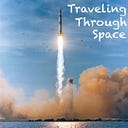Chapter 1: Traveling Long Distance
Sitting on a local flight, a glimpse of the plane’s cockpit reminds me of the spacecraft that took us to the moon more than 50 years ago. Humanity’s greatest journey was fueled by a concoction of mankind’s oldest desire for space exploration and just another competition between the two superpowers.
That one event marked the pinnacle of human achievement. From designing engines that could provide us enough thrust to get off the ground, to designing a delivery vehicle that could last the 238 thousand mile journey in the harshness of space, to engineering a lander vehicle that allowed us to safely land and walk on the Moon. And finally, having enough pieces left to safely get our astronauts back on Earth.
This journey needed an engineering revolution, a unique rivalry, important lessons from unfortunate accidents, and sheer determination of a few that left nothing to chance. The challenges might have seemed insurmountable to ordinary minds. But to a scientific community, with a healthy budget and enough creative freedom, it was only a matter of time. This time was needed to hypothesize potential solutions, test them in experiments and iterate over them till perfected. This scientific method took us, mere inhabitants of an ordinary M class planet (planetary classification in ‘Star Trek’), on an amazing journey that continues to inspire us.
Several scientific breakthroughs long before that rivalry served as building blocks for this journey. These breakthroughs were led by those who challenged prevailing knowledge, cultivated their curiosity and exalted scientific knowledge to new heights. Like when an Italian astronomer, named Galileo Galilei, peered through his telescope and sowed the seeds of modern astronomy. Or when an English physicist and astronomer, Sir Isaac Newton, looked at a falling Apple and gave us three laws of motion. Or when a German born astrophysicist, named Albert Einstein, dreamed up thought experiments and developed his theory of relativity and completely reimagined gravity at stellar scale. Geniuses, separated geographically & by centuries, united by their scientific mission to understand the laws that govern the world around them.
Eventually it was the space race that provided the necessary sparks for achieving significant scientific breakthroughs, within a relatively short amount of time. Though I am sure Galileo wouldn’t have minded hitching a ride on Apollo 11 and taking that giant leap for mankind!
This effort is drawing inspiration from the work of several others and is a running journal of my interest in Astronomy. It is also in the hope of generating scientific curiosity. The title refers to the very long distance we have to travel, not only physically in space, but also as a society to make space flight a reality. To be clear, this journey, that we have to take collectively, does not preclude the work we have to do on Earth. As many have said, this includes tackling climate crises, population growth and political upheaval. Instead, our ability to overcome these challenges will serve as a foundation for that long journey ahead.
So in the following chapters, I want to trace our steps and cover significant events that, I think, have contributed to a more private investment in space. Then, speculate what’s next for us. With the ultimate goal of highlighting the importance of the space program and, hopefully, finding your role in it.
